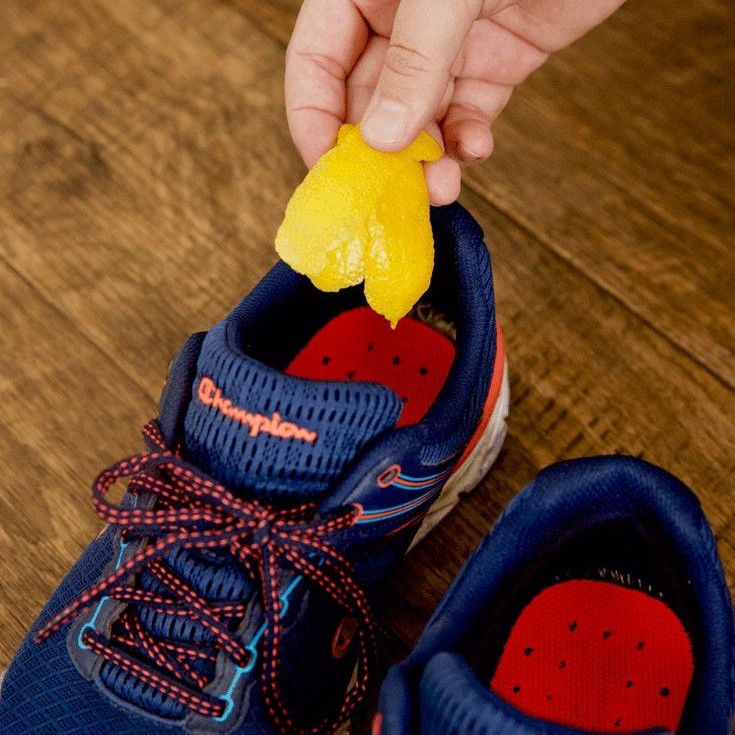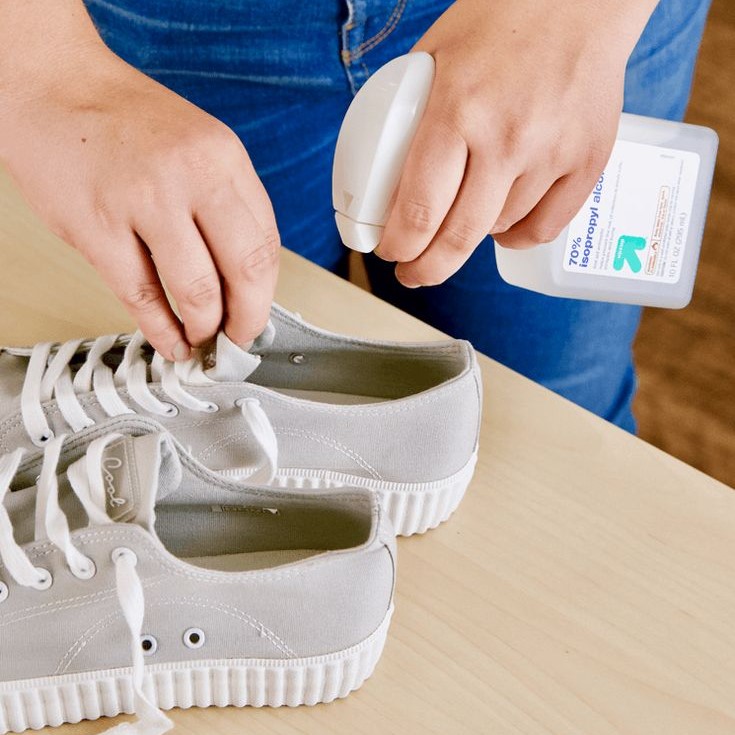Introduction: Understanding Shoe Odor
If you’ve ever taken off your shoes only to be greeted by an unpleasant smell, you’re not alone. Shoe odor can be a common yet embarrassing issue for many people. Understanding what to put in shoes for smell is crucial to maintaining not only the freshness of your footwear but also the comfort of your feet. Odors often develop due to a buildup of bacteria and moisture, which thrive in warm, enclosed environments like shoes. This article will offer a variety of solutions and tips to combat shoe odor effectively, ensuring that your feet stay fresh and comfortable throughout the day.
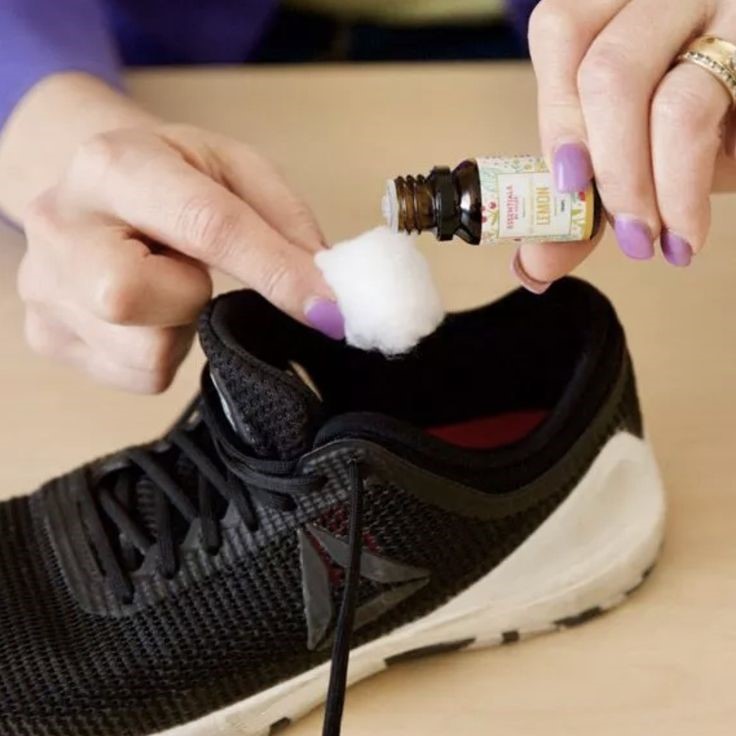
Common Causes of Shoe Odor
Shoe odor is a common problem that can stem from various causes. Identifying these causes can help you take appropriate steps to manage and prevent bad smells.
Sweaty Feet and Moisture Accumulation
Sweaty feet are a leading cause of shoe odor. Feet naturally perspire throughout the day, especially during physical activity or warm weather. Sweat accumulates inside shoes, creating a damp environment. This moisture is the perfect breeding ground for bacteria and fungi. To reduce sweat-related odor, keep your feet dry and opt for breathable footwear.
Bacterial and Fungal Growth in Shoes
Bacteria and fungi thrive in closed, moist environments like shoes. When sweat and dirt settle inside, they create conditions for microbial growth. These microorganisms produce unpleasant smells as they break down sweat and dead skin. Regular cleaning and disinfecting of shoes can reduce bacterial and fungal buildup.
Wearing Shoes Without Socks
Wearing shoes without socks can worsen odors. Socks act as a barrier, absorbing sweat and preventing direct contact between feet and the shoe interior. Without socks, sweat collects directly in the shoes, increasing odor and bacteria accumulation. Always wear clean socks to minimize bad smells and maintain hygiene.
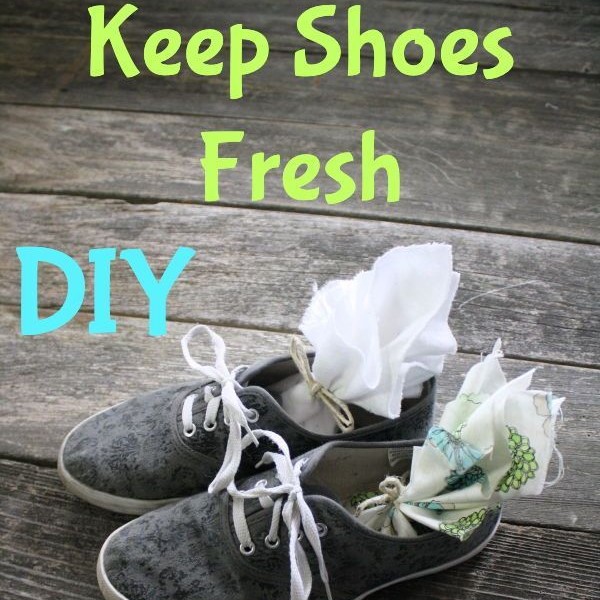
Hygiene Habits to Prevent Shoe Odor
Preventing shoe odor begins with good hygiene habits. These practices help to minimize sweat and bacteria buildup in your shoes, ensuring they stay fresh and pleasant to wear.
Keeping Feet Clean and Dry
Wash your feet daily with soap and water to remove sweat and bacteria. Make sure to dry your feet completely, especially between the toes, to prevent moisture buildup. Apply foot powder to keep your feet dry and reduce sweat. Regularly trimming toenails and removing dead skin can also prevent bacterial growth.
Choosing Breathable Socks and Shoes
Wear socks made of breathable materials like cotton or moisture-wicking fabrics. These socks help absorb sweat and limit odor. Opt for shoes made from breathable materials such as leather or mesh, which allow better air circulation. Avoid wearing tight shoes as they trap moisture and heat.
Rotating Shoes to Allow Them to Air Out
Avoid wearing the same pair of shoes daily. Rotate between multiple pairs to give each pair time to breathe. Place your shoes in a well-ventilated area after wearing them to let air circulate inside. Airing out shoes prevents moisture buildup and discourages bacterial and fungal growth.
Products to Combat Shoe Smell
Finding effective products can help eliminate shoe odor and keep your footwear fresh. Using these solutions is a practical way to fight bad smells caused by sweat and bacteria accumulation.
Odor-Absorbing Insoles
Odor-absorbing insoles are a simple, effective solution for smelly shoes. They are designed to absorb moisture and neutralize odors. Many insoles contain activated charcoal or baking soda to trap smells efficiently. Some also have antimicrobial properties to reduce bacteria and fungi growth. Replace insoles regularly for maximum effectiveness.
Shoe Deodorizers and Sprays
Shoe deodorizers and sprays are convenient tools for freshening up shoes. These products typically fight odors and kill odor-causing bacteria. Look for sprays with natural ingredients like eucalyptus or tea tree oil for extra freshness. Apply spray inside your shoes after use and let them air dry fully to avoid trapping moisture.
Baking Soda and Other Household Remedies
Baking soda is an excellent, affordable method to combat shoe odor. Sprinkle baking soda inside your shoes overnight to absorb moisture and neutralize smells. You can also use other household items like coffee grounds or cedar blocks for a fresh aroma. Empty and clean your shoes thoroughly after using these remedies to prevent residue buildup.
DIY Methods to Eliminate Smell
What to put in shoes for smell? Smelly shoes can be a nuisance, but you don’t always need fancy products to fix them. Simple DIY methods can effectively freshen up your footwear. These methods are easy, cost-effective, and make use of everyday household items.
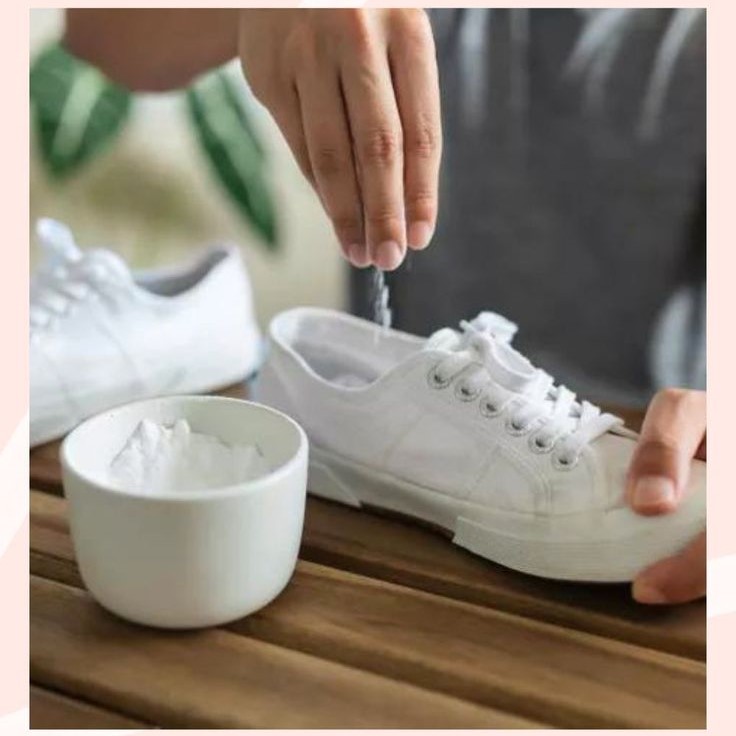
Stuffing Shoes with Newspaper or Dryer Sheets
Newspaper and dryer sheets are excellent for absorbing odor and moisture. Roll up some newspaper and stuff it tightly into your shoes. Leave it overnight to soak up sweat and smells. Replace the newspaper the next day for better results. Similarly, place dryer sheets in your shoes for a fresh scent. The sheets neutralize odors and leave a clean fragrance behind. These methods work well after long, sweaty days.
Using Essential Oils for a Fresh Scent
Essential oils are a natural way to deodorize shoes. Add a few drops of oils like lavender, peppermint, or eucalyptus to cotton balls. Place the cotton balls inside your shoes overnight. The oils kill bacteria and leave a pleasant smell. You can also mix the oils with water in a spray bottle. Spritz the inside of your shoes lightly and let them air-dry.
Freezing Shoes to Kill Bacteria
Freezing your shoes is a clever way to kill odor-causing bacteria. Place your shoes in a plastic bag to protect them from moisture. Seal the bag tightly and put it in your freezer overnight. The extreme cold eliminates bacteria and reduces smells. Once done, allow the shoes to return to room temperature before wearing them. This method works best for casual or athletic shoes.
How to Properly Clean Smelly Shoes
What to put in shoes for smell? Cleaning smelly shoes thoroughly is essential to remove odors caused by bacteria and sweat. Different cleaning methods work better for specific types of shoes, so choose what suits yours best.
Machine Washing Guidelines for Athletic Shoes
Athletic shoes are often machine-washable, but care is needed to avoid damage.
Remove Laces and Insoles
- Preparation Before Washing: Begin the cleaning process by removing the laces and insoles from your shoes. This step is essential as it allows for a more thorough and effective wash of the shoe itself.
- Avoiding Wear and Tear: Washing laces and insoles together with shoes can lead to damage, such as fraying of laces or deformation of insoles. By hand washing them separately, you help preserve their condition and longevity.
- Storage Tip: After removing, consider keeping laces organized in a small bag or container, preventing tangling or loss until you are ready to reassemble your shoes.
Pre-treat Stains
- Identifying Stains: Before throwing your shoes in the wash, take a close look at any visible stains or spots. Common offenders may include dirt, grass, or food stains that may not come out easily in a regular wash.
- Using Gentle Detergent: Select a gentle detergent that is effective yet safe for both the shoe material and the environment. Avoid harsh chemicals that could damage the fabric or finish of the shoes.
- Application Method: Apply the detergent directly to the stained areas. Use a soft brush or cloth to gently scrub the stains, allowing the detergent to work its magic before washing the entire shoe.
Place in a Mesh Bag
- Protection During Washing: Once your shoes are pre-treated and ready to be washed, place them inside a mesh laundry bag. This bag acts as a protective barrier during the wash cycle, preventing the shoes from banging around in the drum.
- Choosing the Right Size: Ensure the mesh bag is appropriately sized for your shoes. A bag that is too small may not allow enough space for movement, while one that is too large may not provide adequate protection.
- Additional Uses: The mesh bag can be used for other delicate items as well, such as laces, to keep everything contained and organized during the wash.
Select a Gentle Cycle
- Washing Settings: Use a gentle cycle when setting up your washing machine. This mode is designed to be gentle on fabrics and will help prevent any potential damage to your shoes.
- Cold Water Recommendation: Opt for cold water instead of hot. Hot water can cause materials to shrink or lose their shape, particularly with certain fabrics like canvas or mesh.
- Delicate Features: The delicate setting minimizes agitation during the wash cycle, helping to maintain the integrity of your shoes. This method is appropriate for shoes that may be more fragile or intricately designed.
Air-Dry Only
- Avoiding Dryer Use: It is crucial to avoid using a clothes dryer for your shoes. The heat generated by the dryer can weaken the adhesive used in shoe construction, potentially leading to delamination or other issues.
- Air-Drying Process: After washing, place your shoes in a well-ventilated area to air-dry. This method is gentler and helps maintain the shape, structure, and overall appearance of your shoes.
- Patience is Key: Depending on the material and thickness of the shoes, drying may take several hours. It’s best to let them dry completely before wearing them again to ensure maximum comfort and cleanliness.
Hand Washing with Vinegar or Soap Solutions
Hand washing is ideal for delicate or non-machine-washable shoes. Follow these steps:
- Prepare a Cleaning Solution: Mix warm water with mild soap or add a splash of white vinegar.
- Scrub the Shoes: Use a soft brush or cloth to scrub inside and out. Focus on smelly areas.
- Wipe Away Soap Residue: Use a damp cloth to wipe away any remaining soap or vinegar.
- Dry Thoroughly: Keep shoes in a ventilated area to dry naturally.
Drying Techniques to Prevent Damage
Proper drying keeps shoes fresh and prevents them from warping.
- Stuff with Newspaper: Place crumpled newspaper inside shoes to absorb moisture and maintain their shape.
- Avoid Direct Heat: Keep shoes away from direct sunlight or heaters to avoid material damage.
- Use a Fan or Dehumidifier: Accelerate drying by placing shoes near a fan or in a dehumidified space.
By following these steps, you can effectively clean and deodorize your shoes, leaving them fresh and odor-free.
Preventative Measures for Long-Term Odor Control
What to put in shoes for smell? Preventing shoe odor over the long term requires consistent and proactive habits. These measures ensure footwear stays fresh and odor-free for extended periods.
Storing Shoes in a Well-Ventilated Area
Proper storage is key to reducing shoe odor. Always store your shoes in a clean, ventilated space. Avoid keeping them in sealed bags or tight closets, as this traps moisture. Use a shoe rack or open shelves to promote air circulation. Letting shoes “breathe” prevents bacteria and fungi from growing inside them. For added protection, avoid storing damp shoes; always air-dry them first.
Using Silica Gel or Shoe Dehumidifiers
Silica gel packs are highly effective at absorbing moisture inside shoes. Place these packs in your shoes when not in use to keep them dry. Shoe dehumidifiers, specifically designed for footwear, can also help. These small devices remove humidity and prevent bacteria buildup. Replace silica gel packs regularly or recharge shoe dehumidifiers as needed for maximum effectiveness.
Maintaining Good Foot Hygiene Practices
Keeping your feet clean directly impacts shoe freshness. Wash feet daily, focusing on areas prone to sweat. Dry your feet thoroughly before wearing socks and shoes. Trim toenails to avoid trapping dirt, and exfoliate dead skin periodically. Applying antifungal powder on feet can prevent infections and keep odors away. Combine these hygiene routines with breathable socks and shoes for the best results.
Special Considerations for Persistent Odor
Sometimes, shoe odor persists despite preventive measures and cleaning efforts. This can be due to underlying issues that need special attention. Addressing these problems promptly will help maintain optimal foot health and hygiene.
Addressing Foot Conditions like Athlete’s Foot
Athlete’s foot is a common fungal infection that can worsen shoe odor. Treating this condition effectively is crucial for reducing smells and ensuring long-term comfort.
- Use Antifungal Products: Apply antifungal creams, powders, or sprays to combat infection and reduce odors.
- Keep Feet Clean: Wash your feet daily with soap and warm water to remove bacteria and fungi.
- Dry Thoroughly: Focus on drying between toes to prevent moisture buildup, which encourages fungal growth.
- Wear Breathable Footwear: Opt for shoes made of materials like leather or mesh for better ventilation.
- Avoid Walking Barefoot: This minimizes the spread of fungal infections in shared spaces like gyms or pools.
Consult a doctor if athlete’s foot persists or worsens. A professional may recommend stronger treatments like prescription medications.
When to Replace Shoes for Health Reasons
Old or worn-out shoes often retain persistent smells and provide poor support. Knowing when to replace your shoes is vital for hygiene and comfort.
- Inspect for Wear: Check for worn soles, damaged insoles, or frayed fabric regularly.
- Replace After Sudden Odor: If shoes acquire a strong smell despite cleaning, consider replacing them.
- Assess Comfort: Toss shoes that no longer provide adequate cushioning or support for your feet.
- Follow Lifespan Guidelines: Replace athletic shoes every 300-500 miles of use and formal shoes every couple of years.
Replacing shoes at the right time can prevent foot discomfort, reduce odors, and improve overall foot health.
Conclusion: Keeping Shoes Smelling Fresh
In conclusion, knowing what to put in shoes for smell is key to maintaining a pleasant and comfortable footwear experience. By understanding the causes of odor and implementing effective solutions, you can keep your shoes smelling fresh. Remember, proactive measures such as proper hygiene, breathable fabrics, and regular shoe rotation are equally important.
Whether you choose to use baking soda, activated charcoal, essential oils, vinegar, or odor-fighting insoles, each method offers significant benefits in combating shoe odor. By adopting these practices, you can enjoy fresh and comfortable feet every day, making your footwear experience much more enjoyable. So, take action today and give your shoes the care they deserve!
